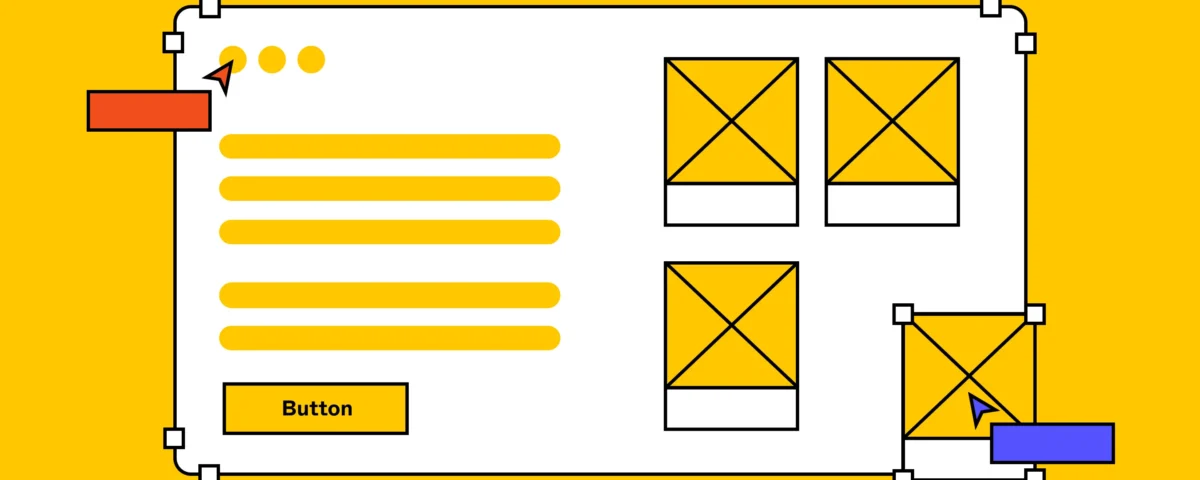The Ultimate Guide to Wireframing: A Critical Step in Web Design

E-commerce Web Development: Building Successful Online Stores
May 22, 2024
WordPress Development: Crafting Powerful and Flexible Websites
May 22, 2024The Ultimate Guide to Wireframing: A Critical Step in Web Design
Introduction to Wireframing
Wireframing is an essential step in the web design process, acting as a blueprint for your website. It helps designers and developers visualize the structure and layout of a web page before adding design elements and content.
Thank you for reading this post, don't forget to subscribe!Why Wireframing is Important
Wireframing allows for early detection of potential issues and facilitates clear communication among team members. By creating a visual representation of a webpage, you can ensure that all stakeholders have a clear understanding of the project’s goals.
Key Elements of a Wireframe
Layout and Structure
A wireframe outlines the basic layout of a webpage, including the placement of headers, footers, navigation menus, and content areas. It serves as a skeletal framework, focusing on the arrangement rather than design details.
Navigation and User Flow
Effective wireframes map out the user journey, showing how visitors will navigate through the site. This helps in creating a logical and intuitive user experience.
Placeholder Content
Wireframes typically use placeholder content, such as lorem ipsum text and grey boxes for images, to indicate where actual content will be placed. This helps in focusing on structure without getting distracted by design specifics.
Types of Wireframes
Low-Fidelity Wireframes
Low-fidelity wireframes are simple sketches that outline the basic structure of a webpage. They are quick to create and are used in the early stages of design to brainstorm and explore ideas.
High-Fidelity Wireframes
High-fidelity wireframes are more detailed and closer to the final design. They include specific font choices, images, and precise spacing. These wireframes are used later in the design process to refine and finalize the layout.
Tools for Wireframing
Pen and Paper
The simplest tools for wireframing are pen and paper. This method is quick and allows for rapid idea generation and iteration.
Digital Tools
There are numerous digital tools available for wireframing, such as Adobe XD, Sketch, Figma, and Balsamiq. These tools offer a range of features, from basic sketching to interactive prototypes.
Best Practices for Effective Wireframing
Keep It Simple
Focus on the essentials and avoid getting bogged down in details. The purpose of a wireframe is to establish the structure and flow, not to finalize design elements.
Use Real Content Where Possible
Using real content, even in a rough form, can help in understanding how the final product will look and function. It can also reveal potential issues that placeholder content might not highlight.
Iterate and Get Feedback
Wireframing is an iterative process. Create multiple versions, get feedback from stakeholders, and refine your wireframes based on that input. This collaborative approach ensures that the final design meets everyone’s needs.
Common Wireframing Mistakes to Avoid
Overcomplicating the Design
Avoid adding too many details in the early stages. Focus on layout and functionality first. Details can be added later.
Ignoring User Experience
Always keep the user experience in mind. A wireframe should make it clear how users will interact with the site and ensure a seamless experience.
Not Testing Interactivity
Even in the wireframing stage, consider how interactive elements will function. Ensure that the navigation and user flow are intuitive and efficient.
Conclusion
Wireframing is a crucial step in the web design process that helps in visualizing the structure and layout of a webpage. By focusing on layout, navigation, and user experience, wireframes provide a clear blueprint for the final design. Using the right tools and best practices, you can create effective wireframes that set the foundation for a successful web project.
For more information: www.ecbinternational.com


